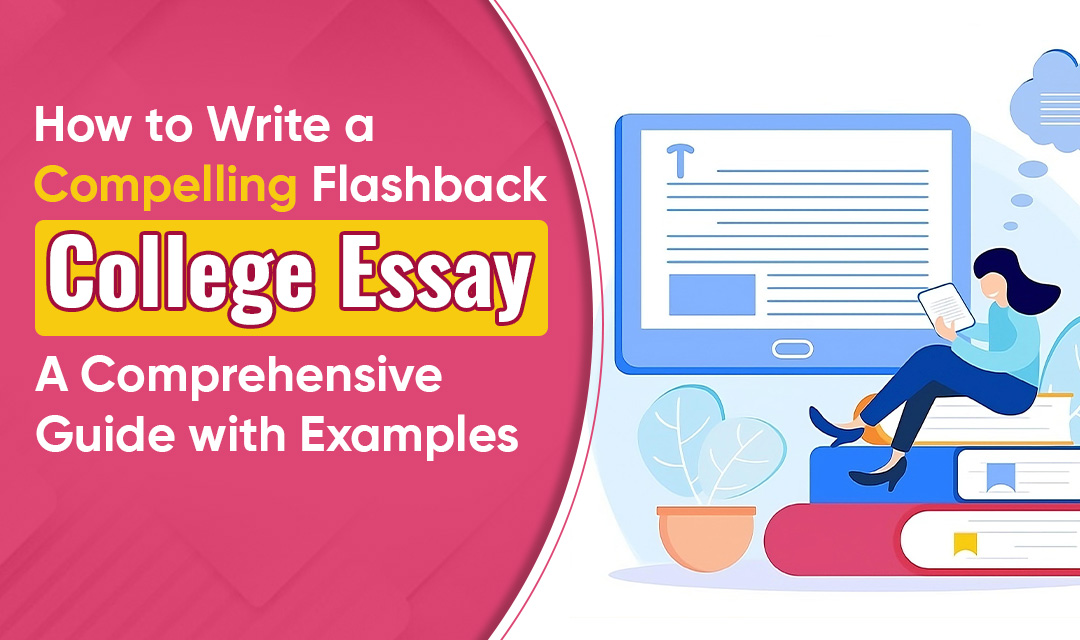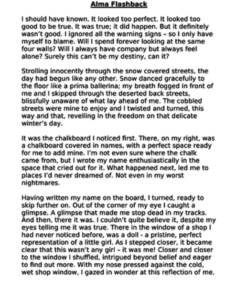EDUCATION
Unlocking the Potential of Classroomus.85 Tips for Educators

Introduction to Classroomus
Welcome to the world of Classroomus, where education meets innovation! In an age where technology shapes the learning experience, educators are constantly seeking tools that enhance engagement and streamline teaching practices. Classroomus.85 is one such powerful platform designed specifically for educators like you. Imagine having a digital space that fosters collaboration, supports personalized learning, and simplifies assessment—all at your fingertips.
This blog post will explore 85 tips that unlock the full potential of Classroomus. Whether you’re a seasoned pro or just getting started with this dynamic tool, these insights will help transform your classroom into an interactive hub of creativity and knowledge sharing. Get ready to dive deep into features tailored for both teachers and students alike!
Benefits of Using Classroomus in Education
Classroomus revolutionizes the learning experience for both educators and students. Its user-friendly interface makes it easy to navigate, reducing the learning curve typically associated with new technology.
One major benefit is enhanced collaboration. Students can seamlessly work together on projects, share resources, and provide feedback in real-time. This fosters a sense of community and encourages active participation.
Personalization is another key advantage. Educators can tailor lessons to meet individual student needs, ensuring that everyone progresses at their own pace. This adaptability contributes to improved learning outcomes.
Additionally, Classroomus supports various teaching styles through diverse multimedia tools. Whether it’s video lectures or interactive quizzes, teachers have multiple options to engage learners effectively.
The platform also streamlines administrative tasks like grading and attendance tracking. By automating these processes, educators can devote more time to teaching rather than paperwork.
Tips for Setting Up a Successful Classroomus Environment
Creating a successful Classroomus environment begins with organization. Set up your virtual classroom space clearly, ensuring essential resources are easily accessible to both you and your students.
Establish consistent routines. Having a predictable schedule can help students feel secure and ready to engage with the content. Regular updates keep everyone informed about upcoming tasks or changes.
Encourage an open communication culture. Utilize Classroomus tools that allow for real-time discussions and feedback. This keeps students connected and invested in their learning journey.
Don’t forget about visual appeal! Use engaging graphics or themes within Classroomus to create an inviting atmosphere that reflects your teaching style.
Foster collaboration by forming small groups for projects or discussions. Mixing diverse skill sets enhances peer learning, making lessons more dynamic and interactive.
Collaboration and Communication Tools on Classroomus
Collaboration is at the heart of Classroomus. The platform offers a range of tools designed to enhance communication among students and educators alike.
Real-time messaging allows for instant feedback and guidance. This feature fosters an open line between teachers and their classes, making it easier to address questions or concerns promptly.
Discussion boards create opportunities for in-depth conversations. Students can share ideas and collaborate on projects outside regular class hours, enriching their learning experience.
Group work becomes seamless with shared documents. Educators can set up collaborative assignments where students contribute simultaneously, promoting teamwork skills essential for the future.
Video conferencing tools enable virtual meet-ups. Whether it’s a guest speaker or group discussions, these features help bridge distance gaps while maintaining personal connections within the classroom community.
With Classroomus, collaboration transforms from a traditional approach into an interactive journey that empowers every learner involved.
Assessment and Grading Features on Classroomus
Classroomus offers innovative assessment and grading features designed to simplify the evaluation process for educators. With a user-friendly interface, teachers can easily create quizzes, assignments, and tests tailored to their curriculum.
Real-time feedback is a standout feature. Students receive immediate insights on their performance, which fosters a growth mindset. This instant communication helps them understand areas needing improvement without delay.
The platform also supports customizable rubrics. Educators can define specific criteria for each assignment, ensuring transparency in how grades are determined. This flexibility empowers teachers while providing clarity for students.
Additionally, Classroomus allows for integration with various grading scales. Whether you prefer letter grades or percentages, adapting your system is seamless.
Data analytics provide another layer of support by tracking student progress over time. These insights help identify trends or learning gaps that might require further attention from educators.
Personalization and Differentiation with Classroomus
Personalization is a game changer in education. Classroomus allows educators to tailor learning experiences to meet the diverse needs of their students.
With its flexible tools, teachers can create customized lesson plans that cater to different learning styles and paces. Whether it’s visual aids for visual learners or interactive quizzes for those who thrive on engagement, Classroomus offers options galore.
Differentiation becomes seamless with this platform. Educators can easily assign tasks based on individual student abilities, ensuring everyone progresses at their own speed. The ability to monitor each student’s journey fosters growth and boosts confidence.
Moreover, feedback can be personalized too. Teachers can provide specific insights tailored to each learner’s performance, promoting effective improvement strategies.
Classroomus enhances educational equity by making every student feel valued through individualized attention and resources designed just for them. This focus not only enriches the classroom experience but also helps cultivate lifelong learners ready for future challenges.
Integrating Technology into Lesson Plans with Classroomus
Integrating technology into lesson plans can transform the classroom experience. Classroomus provides a platform that makes this seamless and engaging.
Start by exploring its diverse tools. Use multimedia resources like videos, podcasts, or interactive quizzes to enhance understanding. These elements cater to various learning styles, making lessons more inclusive.
Encourage student collaboration with features that allow them to work together on projects in real-time. This not only fosters teamwork but also builds essential 21st-century skills.
Incorporate gamification aspects of Classroomus into your teaching strategy. Friendly competition can motivate students and make learning enjoyable.
Don’t forget about feedback mechanisms available within the platform. They enable instant responses from peers and educators alike, ensuring continuous improvement throughout the learning process.
Strategies for Engaging Students on Classroomus
Engaging students on Classroomus requires creativity and adaptability. Start by incorporating interactive elements into your lessons. Use quizzes, polls, and discussion boards to foster participation.
Gamification can also heighten interest. Introduce challenges or badges for completing tasks, which encourages a friendly competitive spirit among students.
Encourage collaboration through group projects. Assign roles within teams so every student feels valued and responsible for their contribution.
Utilize multimedia resources like videos or podcasts to cater to different learning styles. Visuals can help clarify complex concepts while keeping the content dynamic.
Regularly check in with your students through surveys or feedback forms. This not only helps you gauge their engagement levels but empowers them to share their thoughts openly.
Maintain an inviting atmosphere where questions are welcomed. A supportive environment promotes curiosity and active participation in discussions.
Student Data Tracking and Analysis on Classroomus
Tracking student data is crucial for effective teaching. Classroomus makes this process seamless and intuitive. Educators can easily monitor attendance, assignments, and grades in one centralized platform.
The analytics feature helps identify trends and patterns in student performance. By reviewing these insights, teachers can tailor their approaches to meet individual needs. This customization leads to a more engaging learning experience.
Additionally, Classroomus allows for real-time updates on student progress. Teachers receive immediate feedback that can guide lesson adjustments or support interventions when necessary.
Data visualization tools enhance understanding by presenting information clearly. Charts and graphs make it easier to spot areas needing attention or improvement.
By leveraging these capabilities within Classroomus, educators not only track performance but also foster a culture of accountability among students. They become active participants in their own learning journeys through informed discussions about their progress.
Troubleshooting Common Issues
Navigating new platforms can come with its challenges. Classroomus.85 is no exception. However, knowing how to troubleshoot common issues can save educators valuable time and reduce frustration.
First, ensure that your internet connection is stable. A weak or intermittent signal can cause various problems, from slow loading times to disconnections during important lessons.
If you experience difficulties logging in, double-check your username and password for accuracy. Resetting your password can often resolve access issues quickly.
For those encountering glitches with assignments or grades not displaying correctly, refreshing the page might do the trick. This simple step resolves many temporary software hitches.
When it comes to communication tools within Classroomus.85, make sure notifications are enabled so you don’t miss important announcements from students or colleagues. If messages aren’t sending as expected, verify that all users have updated their application versions.
Sometimes the features may not work as intended due to browser compatibility issues; using a different web browser could alleviate these concerns immediately.
Don’t hesitate to reach out for support if persistent problems arise—Classroomus has resources available to assist educators effectively.
Staying informed about updates and changes made by Classroomus will also help minimize disruptions in teaching practices while enhancing overall user experience on this innovative platform!
EDUCATION
How to Write a Compelling Flashback College Essay – A Comprehensive Guide with Examples

A flashback college essay is a powerful way for writers to revisit and reflect on pivotal moments from their past. By using flashbacks, the writer can transport the reader back in time, offering a vivid and emotional portrayal of an important event or experience.
Whether it’s through a character’s memory, a narrator’s reflection, or a dream, flashbacks serve as windows to earlier chapters of a story, providing deeper insight into the writer’s personal growth or transformation. A flashback essay often focuses on a single, impactful moment that shapes the writer’s identity or perspective, helping to convey a lesson learned or a challenge overcome.
In this article, we will share 7 effective tips and strategies to help you write a compelling and well-structured flashback collage essay. Continue reading for insightful details!
7 Best Tips to Write a Flashback College Essay
According to King’s College London research, The Lancet Psychiatry found that 31% of young people had traumatic experiences during their childhood. Flashbacks are a powerful storytelling tool that can enrich the narrative by adding depth and context to current events. It can reveal pivotal experiences from the past that shape the present. When used effectively, flashbacks can captivate readers, providing insight into a character’s motivations, fears, and growth.
However, incorporating flashbacks into writing can be tricky, especially for inexperienced writers. Done poorly, flashbacks can disrupt the flow of the story or confuse readers. In such cases, guidance from a UK-based essay writing service can be a helpful solution.
Below are some effective tips on how to write your flashback college essay effectively and persuasively:
1. Planning and Preparation
It is important to focus on the preliminary step, which is careful planning and preparation. This step is paramount in ensuring that your essay is well-organised, engaging, and effective in conveying your story.
To write first, think about the important events from your past that have had a lasting impact on your life. Also, think about your experiences that add valuable insights to your essay. Select a theme or thread that connects the different moments or experiences you want to highlight.
Example of how to Choose a Theme
If your theme is “overcoming fear“, you can link flashbacks such as the first time you performed in front of an audience, a difficult moment in a team sport, and a personal fear you overcame. These memories, which are linked by the theme of overcoming fear, give the story a coherence that makes it more focused and effective. Planning the essay helps ensure that each memory will serve to reinforce the main theme.
2. Use Flashback Segments
The flashback college essay starts with a hook that sets the tone for the paper. Define the main character and write definitive, descriptive paragraphs that transport the reader to each significant moment or experience. You can explain all your ideas in different paragraphs engagingly. The clear structure provides effectiveness and engages readers in your essay.
Example of Flashback Segments
The concert hall was full of anticipation. Lights flashing, the floor vibrating with the beat, and the crowd felt so alive. As the singer sang, her voice filled that room, and for a time, it was as though time stood still, each note resonating within.
3. Use Transitions and Connections
Use transitional phrases and sentences in your flashback essay to connect the different segments. Emphasise the words and phrases and how they connect to the overall theme or idea. These connections play an important role in signalling to the readers that a flashback is about to occur. You can smoothly shift the chronology from the present to the past without confusion by using exact transitions.
Example of Adding Transitions
“As I walked along the street, memories of my childhood flooded my brain. I was suddenly there again in the old park with laughter echoing in my ears. It was a sunny day with sunbeams shining straight on my skin.” In transition phrases like “Suddenly” and “It was a sunny day,” smooth change from present to past can be observed.
4. Character Reflection and Analysis
Include thoughtful and insightful reflections on the significance of each memory, highlighting how it has shaped your life or character. Critically analyse your writing style to ensure that each event is placed in the correct context and contributes to the flashback college essay’s purpose.
Evaluate the challenges and stories presented, addressing their implications and outcomes with clarity. Pay close attention to maintaining a professional tone throughout the essay, ensuring that it remains consistent and engaging. Focus on refining the structure, logical flow, and depth of your arguments to enrich the overall impact.
5. Using Sensory Details and Imagery
With the sensory details and images, your writing can come to life, bringing the scene to emotions through sights, sounds, smells, tastes, or even textures. Imagery and metaphors add a layer to helping the reader to visualise exactly what is going on. The importance of authenticity is to allow honesty, being true about what you have experienced.
You can use language to convey an honest feeling. It is also important to be straightforward and focused in your sentences, keeping them concise so the message remains sharp and clear.
Example of Using Sensory Detail
Without sensory details:
“It was hot at that time, and I got uncomfortable.”
With sensory details and imagery:
“The sun blazed overhead, wrapping my skin in a heavy, suffocating blanket. Beads of sweat slid down my back while the air hung thick with the gritty scent of dust and dry grass.”
6. Editing and Revising
Editing and revising are the two most important elements in refining and presenting a work. Review all parts of your flashback college essay clearly and make sure the content is authentic, informative and engaging.
By using formatting guidelines and multiple revisions, you can convey your message and narrative clearly. When your idea is clear and presented openly, your reader and viewer will easily grasp it.
7. Get feedback
Refine your writing by sharing your essay with others. Ask them to give feedback and highlight the blunders and unessential use of phrases and sentences in the essay. After getting suggestions and recommendations from others, you can correct the mistakes that have been emphasised. Make sure your final draft is error-free, well-structured and well-written. By ensuring clarity, you can leave an everlasting impression on both the readers and the viewers.
Flashback College Essay Examples
Below are two examples of flashback college essays. Have a look at these examples to understand the topic in more depth.

Can I Write about Trauma in My College Essay?
Yes, you can write about trauma in your college essay, but it’s important to approach it thoughtfully. Admissions officers want to understand how you’ve grown from experiences, so focus on the lessons you’ve learned, the resilience you’ve developed, and how it has shaped who you are today.
Avoid writing solely about the traumatic event itself; instead, emphasise your emotional growth, coping mechanisms, and how the experience influenced your goals or worldview. Be sure to strike a balance and share enough to demonstrate your strength and self-awareness, but maintain a positive and forward-looking tone. Remember that the essay should showcase your potential and ability to contribute to the college community.
Conclusion
Flashback college essays are a powerful storytelling technique that allows writers to explore memories or experiences, adding depth and emotional richness to their narratives. To effectively draw readers into your flashback, you’ll need to incorporate specific transition phrases, past tenses, vivid descriptions, and even internal dialogues that reflect the emotions and context of the moment you’re revisiting.
If you find it challenging to structure or enhance your flashback college essay, you can get help from custom essay-writing firms in the UK. These services can guide you in creating an essay that not only engages your readers but also effectively develops context, character, and emotional impact.
Ultimately, the goal of your flashback college essay should be to showcase your unique voice and perspective. With the right guidance and techniques, you can transform your personal experiences into compelling narratives that resonate with readers on a deeper level.
-

 TECHNOLOGY12 months ago
TECHNOLOGY12 months agoTop 5 Tips for Mastering in_a_dndmixin_drag in Your Campaigns
-

 TOPIC11 months ago
TOPIC11 months agoExploring the History and Culture of Rosewellsk
-

 TECHNOLOGY1 year ago
TECHNOLOGY1 year agoYMoviesHD vs Other Streaming Platforms: A Comprehensive Comparison
-

 TOPIC1 year ago
TOPIC1 year agoBehind the Scenes: The Philosophy and Vision of PhmHaven
-

 TOPIC1 year ago
TOPIC1 year agoThe Rise of Tribute Printed Pics: Honoring Life Through Photography
-

 TOPIC11 months ago
TOPIC11 months agoA Beginner’s Journey with Lwedninja: From Novice to Pro
-

 TOPIC11 months ago
TOPIC11 months agoIs Finizona Free? Unpacking the Costs Behind This Popular Platform
-

 TOPIC11 months ago
TOPIC11 months agoDecoding m0therearf: Why This Buzzword Matters in Today’s Culture
